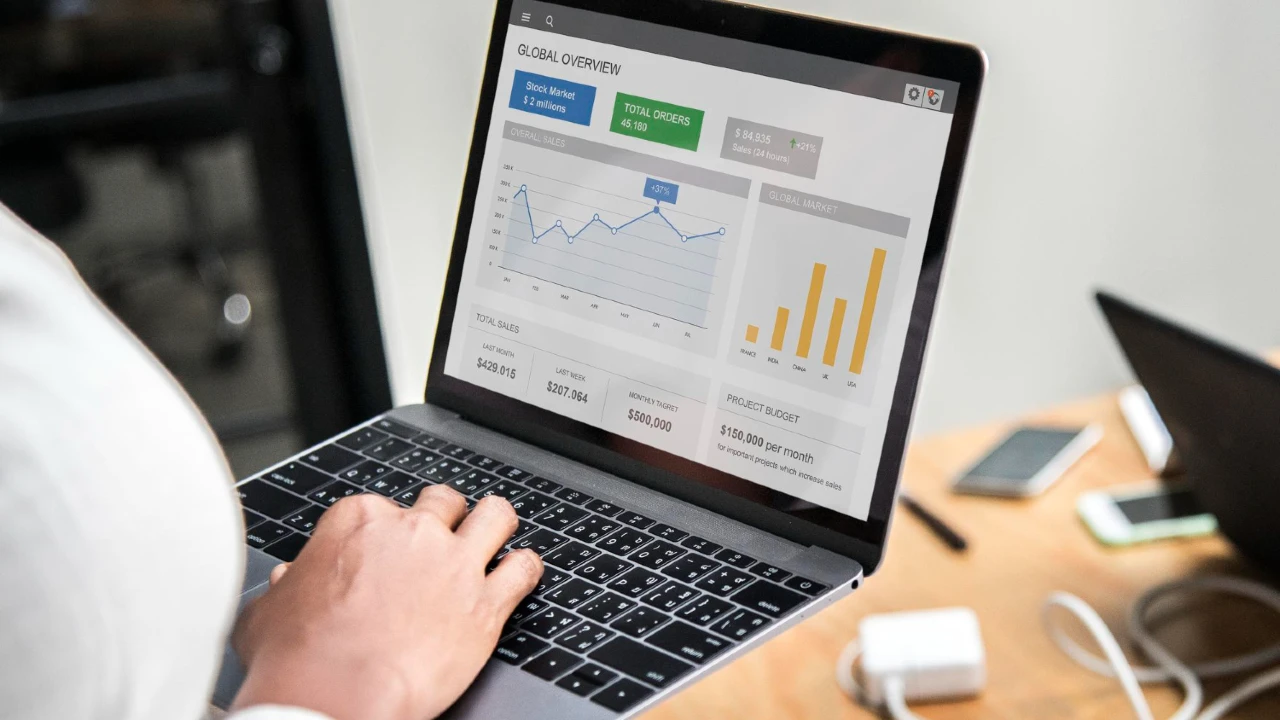Google Analytics serves as an important tool by which digital marketers and developers on the web analyze activities about traffic, conversions, and behaviors on a specific website. One of the most essential components of Google Analytics for analysis is identifying the medium that sources come from-in this case, under “Medium.” But what about other sources that don’t fall into those above-mentioned mediums? Let’s learn what is not considered a default medium in Google Analytics and why such matters to your business.
What Are Default Mediums in Google Analytics?
Before moving on to what is not considered a default medium, let me first define what “Medium” means in Google Analytics. A medium is the broad category of traffic sources which drives visitors to your website. The default mediums are:
- Organic Search – Traffic coming from search engines.
- Referral – Traffic from external websites.
- Social – Traffic from social media platforms.
- Email – Traffic generated from email campaigns.
These default categories help website owners understand how visitors are finding their site. However, not all traffic fits into the neat boxes.
What Is Not Considered a Default Medium in Google Analytics?
With every traffic you track in Google Analytics, it doesn’t categorize some sources as a default medium; examples include:
- Direct Traffic – This is the kind of traffic where origin is not known. This is from users entering the URL directly into their browser.
- None – which is when Google cannot trace the origin of the visit.
- Custom Mediums – Traffic that doesn’t fit into the default Google mediums, but are manually defined by the user, like particular UTM parameters.
A knowledge of such non-default media is therefore very important for correct data analytics as well as winning digital marketing strategies.
Also Read: What Are The Five Sections of The Google Analytics Dashboard
Why Does It Matter What Is Not Considered a Default Medium?
Understanding what is not considered a default medium in Google Analytics will help businesses avoid misinterpreting traffic data. The traffic coming from direct or none sources may not appear to be much, but it could hold key user behavior and brand recognition information.
- Impact on Conversion Tracking – If users directly come to your site or through mediums not being tracked, then you may have to alter the conversion tracking.
- Referral Tracking Challenges – Sometimes, links cannot automatically be categorized as referral because there are redirects sometimes, or referrer information is not available.
- Custom Campaigns – Through ecommerce website design services or website redesign services, usually you generate traffic through some channels that do not belong to Google’s defaults. You may have to track them manually through UTM parameters.
How to Manage Non-Default Mediums in Google Analytics
You should now configure it to handle any non-default mediums properly:
- Setting Up UTM Parameters – This will help you to add custom UTM parameters to your URLs so that you can tag the traffic source, medium, and campaign manually. This way, the traffic coming through responsive website development services or a google tag manager consultant will be tracked accurately.
- Custom Channel Grouping – If you need more control, Google Analytics allows you to create a custom channel grouping that extends beyond the default mediums.
This means by creating custom filters, you make sure that all sources are tracked in a meaningful way even when they do not automatically fall under a default medium.
Using Google Tag Manager for Better Tracking
Google Tag Manager is useful in customizing your tracking setup in Google Analytics. You can configure tags using Google Tag Manager to track non-default mediums, like traffic coming from specific marketing campaigns or social media channels. This means you will be able to track referrals from email campaigns that wouldn’t otherwise fall into the default “email” medium.
- Referrals from email campaigns not automatically categorized as a default “email” medium.
- Social media traffic which might not be reported as a referrer at all or requires custom tagging.
Ensures that with website maintenance services, updating your site tracking system is done uninterruptedly.
Also Read: What Better Google Analytics or Yandex Metrics
Advanced Tips for Identifying and Tracking Non-Default Mediums
If you are looking to get more advanced on Google Analytics tracking, check this out:
- Segmentation – You can use segmentation for Google Analytics to filter out the direct traffic or medium “none” and compare the rest of the sources. That will help you track if the sources have really been contributing to tonnes of conversions.
- Use UTM Parameters Effectively – During website redesign services, make sure to use the utm_medium and utm_campaign parameters in the URL for passing information.
Common Pitfalls to Avoid When Analyzing Non-Default Mediums
While working with your Google Analytics, there are some common mistakes you should look out for:
- Ignoring Direct Traffic – Direct traffic does not fit into the predefined medium; this does not mean it doesn’t count. This is the most important traffic which may have been generated because of brand awareness and loyal visitors.
- Overlooking UTM Tags – If you’re running campaigns but not using UTM parameters, then you will miss valuable insights on how your campaigns are performing.
- Inconsistent Tracking – If you’re driving traffic from more than one source, such as PPC and email marketing, then make sure that tagging conventions across all your campaigns are the same to not get an incorrect report.
Conclusion – Properly Tracking Non-Default Mediums
It is key to understand what is not considered a default medium in Google Analytics to enable you to fine-tune your tracking strategy better, hence getting a much clearer view of where your website traffic comes from. If direct or custom campaigns are not tagged properly then perhaps they will not even get tracked at all. Therefore, labeling sources by setting UTM parameters for custom URLs gives better tracking of more sources particularly for unique traffics brought about by such service instances like ecommerce website design, as well as Google Tag Manager, even their assistant campaigns.
Effective tracking also shows not only the source of traffic but also the contribution of various campaigns to your goals. For example, if you tag social media posts or email campaigns manually, you can categorize and analyze these non-default mediums accurately. Such a customized approach is very valuable for tracking the impact of each channel, so you can tailor your digital marketing and conversion strategies.
All mediums relevant, recognized by Google Analytics means you have a complete user-behavior view, and adding Google Tag Manager with UTM tagging lends further strength to this setup; you will now be capable of gaining strong data insight and drive more effective, informed marketing strategies.
Also Read: Add The Google Analytics Code To Your Canva Website
FAQs
What is not considered a default medium in Google Analytics?
Those types of traffic in Google Analytics do not fall under the default mediums. Default mediums would include categories such as “organic” (search engines), “referral” (from other websites), “social” (from social media), and “none” (direct visits). However, traffic from custom campaigns or specific marketing channels like email newsletters, partner websites, or unique paid ads, for example, doesn’t align automatically with these defaults. Custom UTM parameters are needed to categorize such sources properly. Without custom tagging, Analytics could classify this traffic as “none” or classify it mistakenly, which would limit how much you can learn from your campaign performance and traffic source.
What is not considered a default source in Google Analytics?
A default source in Google Analytics refers to the set predetermined origins of website traffic from which users come from like search engines, Facebook; it does not accommodate types of traffic that fall otherwise. For example, traffic like direct traffic, where users will type the URL in their browser or access it through bookmarks, is not recognized as a specific source and, therefore, is recognized as “direct” with a medium of “none.” Secondly, any source that you create with UTM parameters will not be matched to the default source categories, so there is an opportunity to have more customized tracking and segmentation of specific campaigns or unique sources of traffic.
What are mediums in Google Analytics?
According to Google Analytics, “mediums” are the more general ways that traffic would arrive at a website to help users understand how the visitors interact with their contents. The most common defaults are “organic” where it comes from search engine, “referral,” which is from other sites, “social,” via social media, “email” from email campaigns, and “CPC,” through paid search ads. These labels help determine the type of interaction that brought users to the site, making it easier to analyze traffic and trace campaigns. A customized medium can also be created through UTM parameters for specific campaigns to give businesses further control over tracking and understanding specific traffic sources.
What is not a default medium in Google Analytics?
A default medium in Google Analytics is a predefined category. For example, search traffic would automatically default to “organic,” referral traffic to come from other websites was “referral,” social media “social,” and direct visits “none.” But many kinds of traffic don’t fall into one of these predefined mediums automatically. For instance, custom campaign mediums created with UTM parameters are not default and must be manually created. Moreover, traffic from specialized sources, such as newsletters via email or specific partnerships, can only be tracked correctly if custom mediums are used, since they don’t automatically fall into Analytics’ standard medium categories.






Leave a Reply